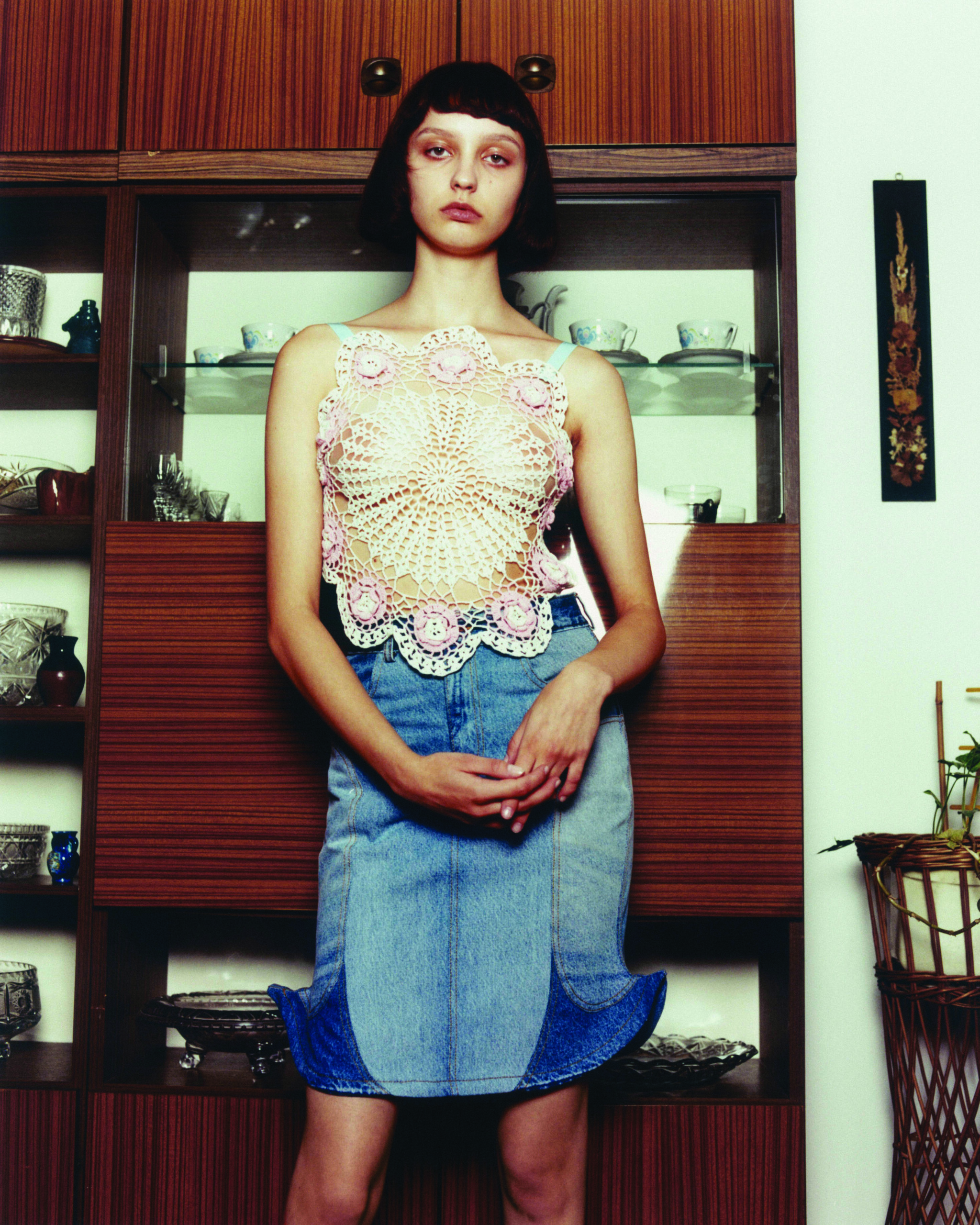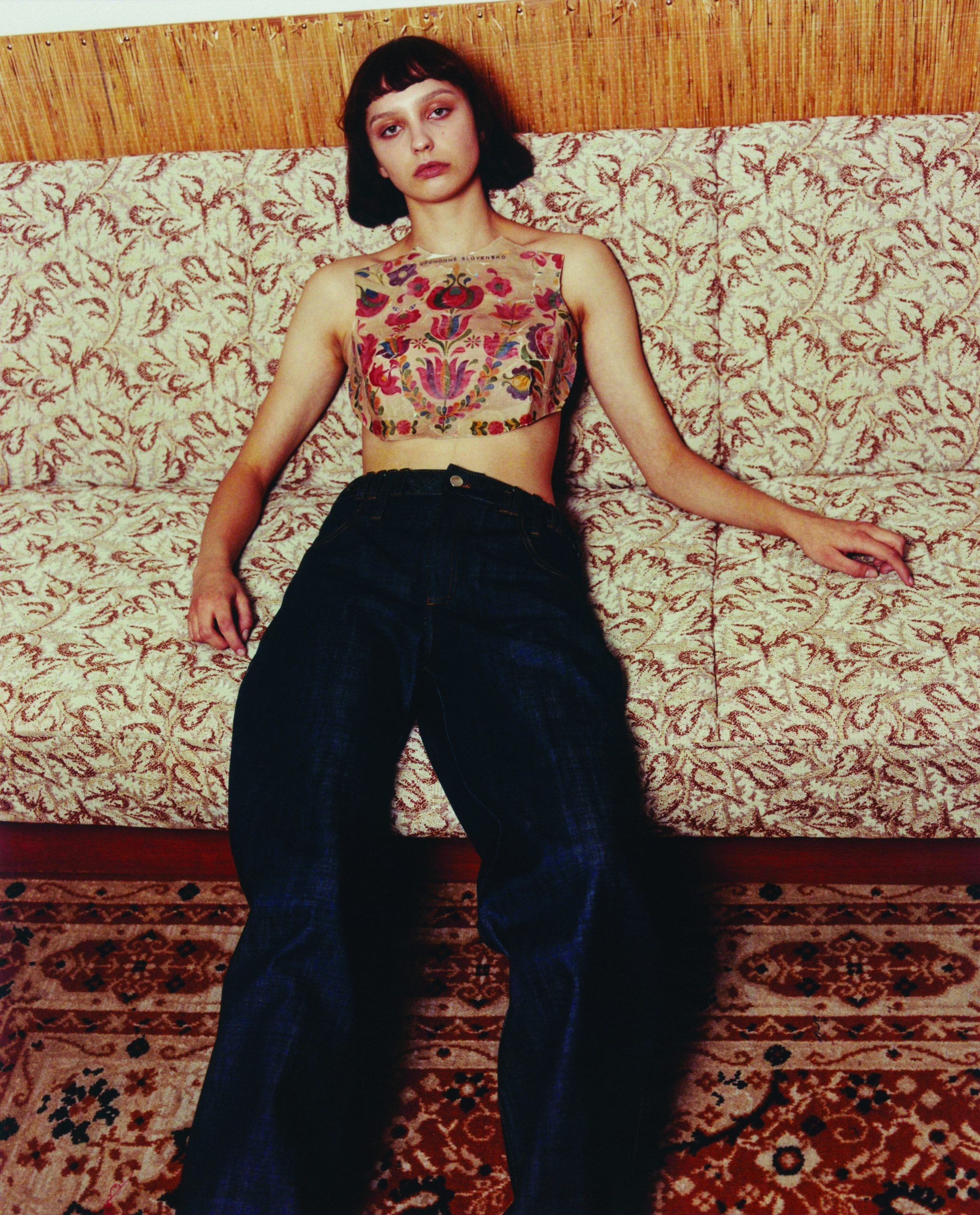Drawn to denim for its complexity and versatility, Alexandra Armata shares that there are nearly no limitations behind the fabric. “In my new collection, I made a suit that looks like it’s wool, but it’s actually made of brushed denim,” she says.
Thinking back to her Polish parents’ storytelling, she grew up hearing about people saving up for American denim. It was complicated to find, expensive, and a political statement (as trade embargoes essentially made it illegal). During the communist era in Eastern Europe, jeans were a symbol of unity and freedom that was only seen in movies.

This background and history behind the fabric stuck with her, especially the strict political tensions surrounding a single garment. For her final collection at Central Saint Martins, Armata vowed to make it personal and explored her heritage by unpacking family photos and archaeological material. “The most original story is your personal story,” Armata says.
Fast-forward to post-grad, she was in the midst of the pandemic, which pushed her to start “30 Jeans/30 Days”. This project involved Armata purchasing used jeans from eBay to making a pair of jeans every day for a month in lockdown. Each pair pushed her to design and attempt a new technique that tested her skill. Exploring both wearable and experimental pieces, she demonstrated the reality of what’s possible with upcycling.
After “30 Jeans/30 Days”, Armata desired another creative outlet that used denim. This time, she wanted to branch out from strictly creating jeans and had ideas for dresses and hats. Instead of individual pieces, she had complete outfits in her head. “Sometimes an outfit communicates much more strongly than just individual pieces,” she says.

With this new project, she researched old couture techniques and aimed to challenge the stereotypes of upcycling and stretch what could be achieved. She mixed couture with denim to demonstrate the possibilities of upcycling, outside of the familiar predictability of combining light and dark wash jeans.
Collectively, these projects had a purpose. Armata wanted to design denim without feeling guilty about the environmental waste and pollution caused by the material. This passion still lingers in her work, where, today, she aims to make sustainable jeans accessible.
“I know there are people that want to shop more consciously, and I want to be the designer that provides that denim to everybody,” she says. “I’m producing collections that are a lot more approachable but still have a conceptual narrative that backs them.”

